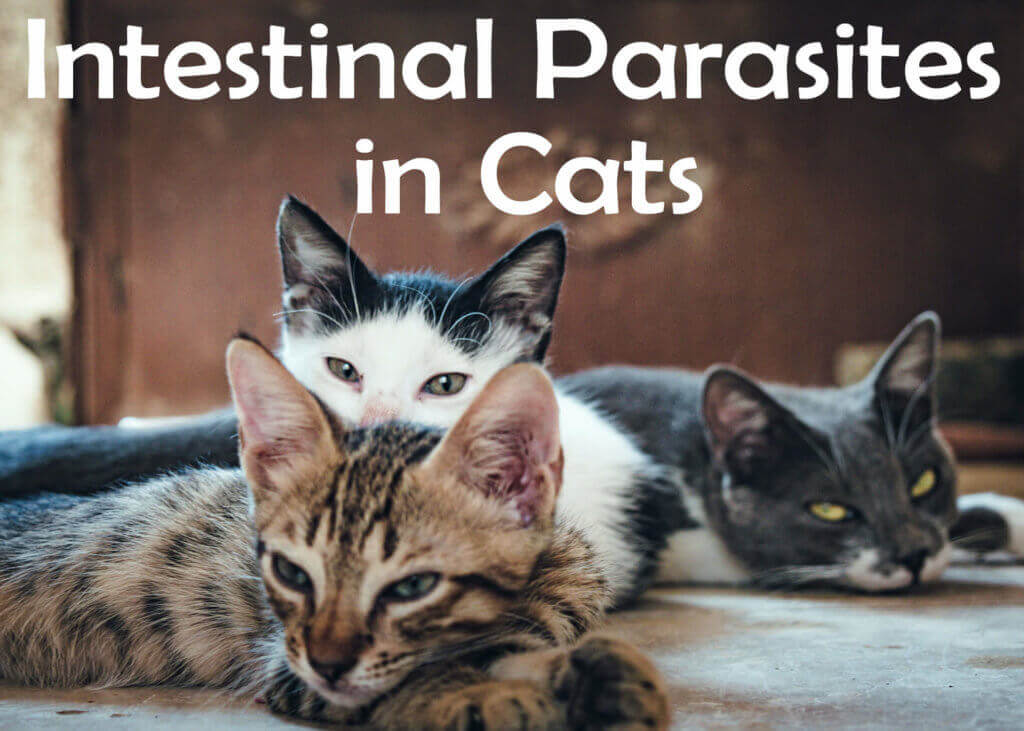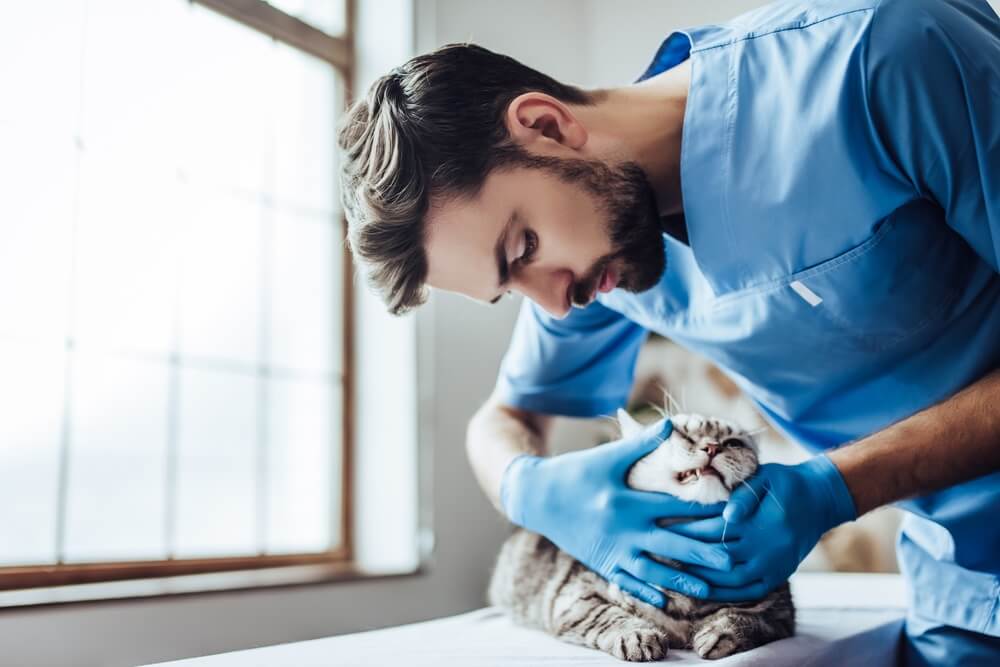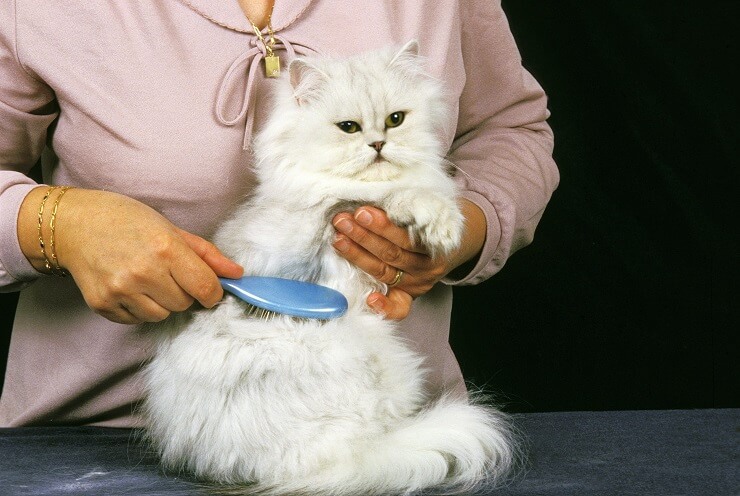Intestinal Parasites In Cats : Symptoms, Treatment And Prevention
This page contains affiliate links. We may earn money or products from the companies mentioned in this post through our independently chosen links, which earn us a commission. Learn More

Cats maybe good at self-maintenance but can become hosts to many intestinal parasites. Intestinal parasites are a common problem in cats, with prevalence rates as high as 45 percent.
The signs associated with parasites in cats are nonspecific, such as a dull coat, vomiting, diarrhea, coughing, a pot-bellied appearance, bloody stools, loss of appetite and pale mucous membranes.
Vomiting, diarrhea, and dehydration, caused by intestinal parasites, will deplete your cat and make him more susceptible to other infections and diseases, as well as robbing your cat of good health. Some parasites can even infect humans.
Diagnosis

At this time, there is no one de-wormer that can eliminate all species of parasites. Therefore an accurate diagnosis from your cat’s veterinarian is necessary to treat your cat properly. Diagnosis is usually made from a microscopic examination of a fresh stool sample (passed less than 12 hours ago) or, in the case of tapeworms, by seeing the segments in the stool.
It is suggested that your veterinarian test your cat’s stool periodically to make certain that your cat is not harboring any parasites.
It is also a good idea to visually examine your cat’s stool for signs of tapeworm segments or other abnormalities (diarrhea, bloody stools, excessively hard stools, etc) which may indicate that your cat needs medical attention.
The following are brief descriptions of common intestinal parasites seen in cats (and dogs), detailing the symptoms, diagnosis, treatment, prevention, as well as the risk of human transmission.
Roundworms
- This is a common worm of puppies and kittens, but can be seen in dogs and cats of any age.
- Diagnosis is made from a microscopic examination of the feces or from a description of the worm, if it is seen in the stool or vomit.
- Symptoms will vary from none to vomiting and diarrhea, and abdominal swelling.
- Transmission to adult dogs and cats occurs by infected feces contaminating the yard. As a result, prevention is accomplished by isolating your cat from infected feces of other animals.
- Your cat’s veterinarian will prescribe the proper treatment for your cat. Follow directions carefully when giving the medication. For dogs, many of the heart-worm preventives routinely used, such as Heartguard Plus, Interceptor, and Revolution, also aid in preventing roundworm infection.
- Transmission to humans is rare but young children can develop “visceral larval migrans” by eating dirt contaminated with feces.
Hookworms
- This is also a common worm of puppies and kittens but is seen with equal frequency in adults. This parasite sucks your cat’s blood and can cause severe anemia.
- Diagnosis is made from a microscopic examination of your cat’s stool.
- Symptoms will vary from none to blood in the stool (dark tar-colored stool) with diarrhea.
- Your veterinarian will prescribe the proper medication to rid your cat of hookworms. Severe cases may need a transfusion and hospitalization.
- Transmission to adult animals occurs by infected feces contaminating the grass or soil. Prevention, therefore, requires that your cat be kept away from contaminated areas. Many of the commonly used heart-worm preventive medications, such as Heartguard Plus, Interceptor and Revolution, aid in the prevention of hookworms also.
- Transmission to humans is uncommon and usually shows up as skin lesions.
Tapeworms
- This common worm affects both dogs and cats.
- Transmission occurs when your cat grooms himself and “eats” a flea, or when he hunts and eats small animals, such as rabbits, squirrels, etc. The intermediate form of the tapeworm is inside the flea’s body (or the body of the rabbit or squirrel) and it then attaches to the intestine and begins to grow “segments”. In about 3 weeks, these segments begin to pass in the stool. They are approximately ¼ to ½ inch long, flat, and white. After a short time in the air, they dry up to resemble a small yellow flat seed.
- Diagnosis is made from seeing these segments on the stool or around your cat’s anal region. They will sometimes show up on microscopic fecal exam as well.
- Your veterinarian will advise you which medication is best to rid your cat of the tapeworms. However, available tapeworm treatments will not prevent further infection if your cat is exposed again. The only prevention is strict flea control and restricted hunting activity.
- There is no direct transmission from dog or cat to a human (although people can be infected by eating contaminated meat).
Giardia
- This parasite is not a worm. It is a very tiny single-celled parasite that can live in the intestines of dogs, cats, and humans.
- It is seen most commonly in dogs coming out of kennel-type situations (cat stores, shelters, dog pounds, etc.) but its incidence is increasing.
- Symptoms include intermittent or continuous diarrhea, weight loss, depression, and loss of appetite.
- Diagnosis is made from a very fresh fecal specimen.
- A surprising number of affected animals are infected but are negative in these tests, even with multiple examinations. As a result, this parasite is often treated without a confirming diagnosis.
- Prevention involves careful disposal of all fecal material and cleaning contaminated areas.
- Humans can become infected with Giardia, so special care must be taken to wash hands and utensils.
Coccidia
- This is also a single-celled parasite.
- It is seen primarily in puppies and kittens, although debilitated adults can also be affected.
- Transmission occurs by eating the infection stage of the parasite. It then reproduces in the intestinal tract causing no symptoms in mild cases to bloody diarrhea in severely affected cats.
- Diagnosis is made from a fresh stool sample.
- Treatment varies greatly depending on your cat’s condition. Severely affected cats may need hospitalization.
- Prevention involves disposal of all stools and cleaning your cat’s living area.
- Human transmission is uncommon but can occur.
Treatment

There are many different medications available for treating intestinal parasites. The proper choice will depend on the type of parasite present, the risk of re-infection, and the physical condition of your cat.
Therefore, your cat’s veterinarian should be consulted to recommend the proper medication for treatment and discuss the appropriate treatment intervals with you, https://livingwellnessmedicalcenter.com/klonopin-clonazepam/. These will vary depending on the type of parasite present and the severity of the infection.
Many of the monthly heart-worm preventatives also help prevent certain types of intestinal parasites. These include roundworms and hookworms, although some of the heart-worm preventatives can also help control tapeworms or whip-worms.
All de-worming medicines have the potential to produce side effects and should only be used as needed and under proper conditions. Your veterinarian will discuss the proper usage of these medications with you.
Most puppies and kittens are infected before birth and, for this reason, your veterinarian may recommend de-worming at a very young age.
If hookworms are suspected, your veterinarian may advise de-worming or checking your puppies or kittens stools starting as early as 2-3 weeks of age. More than one treatment is often necessary in order to eliminate these parasites.
Conclusion
Parasites are very common in cats, but can be prevented. Prevention begins with good sanitation like daily litter box scooping and cleaning with a disinfectant. It is also important to avoid raw meat diets, and keeping fleas at bay.



